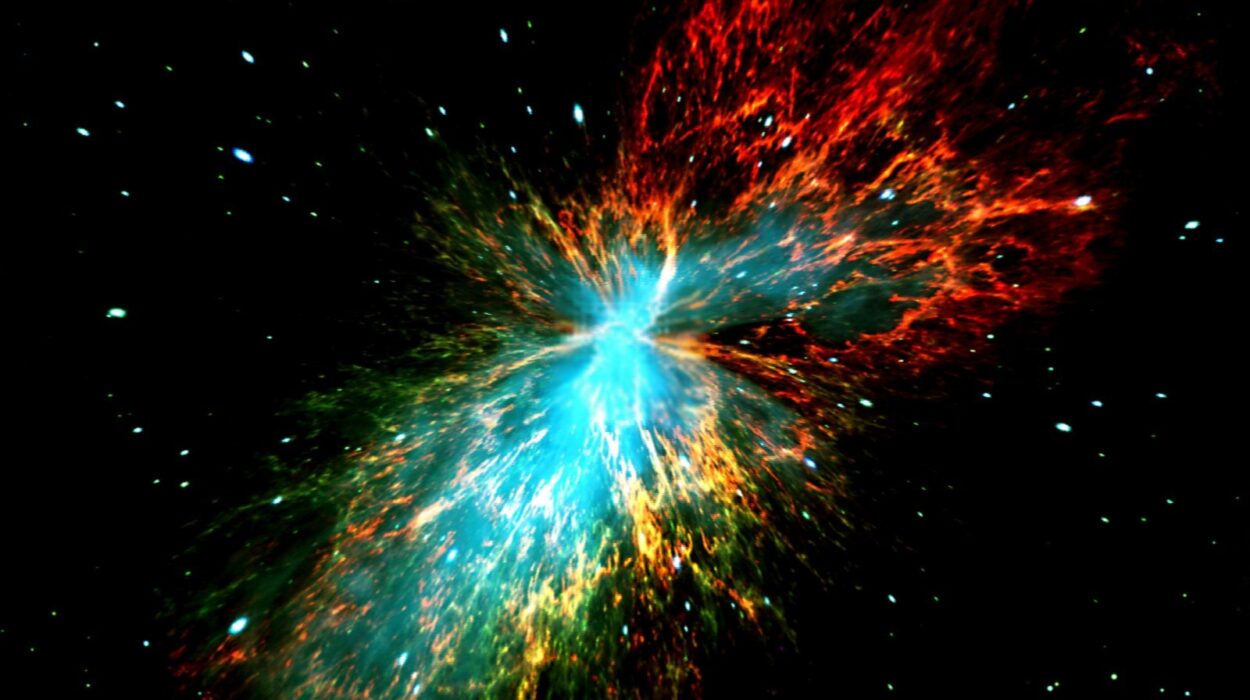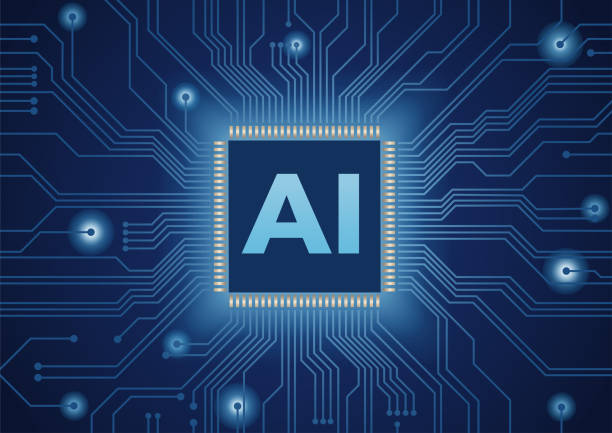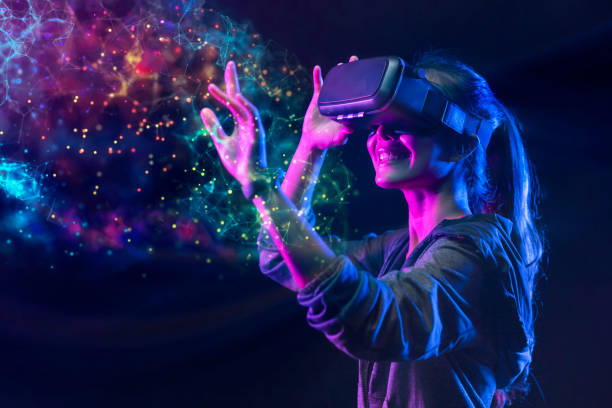In the 21st century, the world is witnessing a revolution in the way information is processed, transmitted, and secured. Classical communication systems—based on bits and electronic signals—have fueled the digital age, enabling global connectivity, high-speed data exchange, and the rise of cloud computing. However, as technology advances and our demand for data security, computational power, and network efficiency grows, the limitations of classical networks are becoming increasingly apparent. This has led scientists and engineers to explore a new frontier in communication technology: the quantum internet.
The quantum internet represents an entirely new paradigm of networking. Instead of transmitting classical bits of information, it would transmit quantum bits—or qubits—based on the laws of quantum mechanics. Such a network could enable unprecedented capabilities, including unhackable communication, distributed quantum computing, and ultra-precise sensing. But the question remains: can such a system truly be built? To answer that, we must explore the science that makes the quantum internet possible, the technological challenges it faces, and the ongoing progress toward making it a reality.
Understanding the Foundations of Quantum Communication
At the heart of the quantum internet lies quantum mechanics—the fundamental theory describing the behavior of matter and energy at the smallest scales. Quantum mechanics is governed by principles that defy classical intuition, such as superposition and entanglement. These principles form the basis of quantum communication.
A classical bit can exist in one of two states, 0 or 1. A quantum bit, or qubit, can exist in a superposition of both 0 and 1 simultaneously. This property allows quantum systems to carry much more information than classical systems and enables new forms of computation and communication. However, the most powerful aspect of quantum communication arises from a phenomenon known as entanglement.
Entanglement is a uniquely quantum property where two or more particles become linked in such a way that the state of one instantaneously affects the state of the other, regardless of the distance between them. When two qubits are entangled, measuring one qubit immediately determines the state of its partner. This correlation persists even if the qubits are separated by vast distances. Einstein famously called this “spooky action at a distance,” but it has been repeatedly confirmed through experiments.
The exploitation of entanglement is essential for the quantum internet. It allows the transmission of quantum information securely through quantum teleportation and forms the backbone of quantum key distribution (QKD), a method that enables unbreakable encryption based on the laws of physics rather than computational complexity.
The Vision of a Quantum Internet
The vision of the quantum internet extends beyond simply connecting quantum computers or sending encrypted messages. It involves creating a global network that can distribute quantum states between distant users, allowing them to perform tasks that are impossible on classical networks.
In a quantum internet, nodes—such as quantum processors or quantum sensors—would be connected through quantum channels that transmit qubits via photons, the elementary particles of light. These qubits could be stored, processed, and transmitted across vast distances without losing their quantum properties. Such a network would enable several revolutionary applications.
One of the most immediate benefits would be in secure communication. Quantum key distribution allows two parties to share a secret encryption key with absolute security guaranteed by the laws of quantum physics. Any attempt to intercept or eavesdrop on the communication would disturb the quantum state, alerting the participants to the intrusion.
Beyond secure communication, a quantum internet would allow for distributed quantum computing, in which multiple quantum processors could be linked to perform complex calculations collectively. This could exponentially expand computational capabilities, allowing tasks such as simulating molecular interactions, optimizing complex systems, or analyzing vast datasets to be performed much more efficiently.
Quantum networking would also enhance sensing and metrology. By linking quantum sensors over large distances, scientists could achieve new levels of precision in measurements of time, gravitational waves, or electromagnetic fields. The quantum internet would thus serve as the foundation for a new era of technological and scientific advancement.
The Building Blocks of Quantum Networking
Constructing a quantum internet requires the development and integration of several key components, each rooted in advanced quantum technologies. These include quantum channels, quantum memories, quantum repeaters, and reliable entanglement distribution mechanisms.
A quantum channel is the medium through which quantum information is transmitted. Typically, photons are used as qubit carriers because they travel at the speed of light and are relatively resistant to environmental disturbances. Quantum channels can be established using optical fibers, free-space links, or satellite communication systems. However, transmitting qubits over long distances presents significant challenges, as photons can be lost or decohere due to interactions with the environment.
Quantum repeaters are essential to overcoming this limitation. In classical networks, repeaters amplify and regenerate signals to extend the communication range. In quantum systems, this is not straightforward because quantum information cannot be copied—this restriction is known as the no-cloning theorem. Quantum repeaters circumvent this by using entanglement swapping and quantum teleportation to extend entanglement across long distances. A functioning network of quantum repeaters is thus a critical step toward achieving a large-scale quantum internet.
Quantum memories are devices that can store quantum states for extended periods without significant loss of coherence. These memories are crucial for synchronizing quantum communication between distant nodes. They act as buffers, enabling quantum signals to be delayed, synchronized, or processed as part of network protocols. Developing reliable and long-lived quantum memories remains one of the central challenges in building a practical quantum internet.
Quantum Entanglement Distribution
The ability to generate, distribute, and maintain entanglement over long distances is the cornerstone of the quantum internet. In practice, this involves creating pairs of entangled photons and transmitting them to separate locations through optical fibers or free-space links. If these photons remain entangled upon arrival, they can be used for quantum teleportation or QKD.
Entanglement distribution over fiber networks faces the challenge of photon loss, especially over long distances. Optical fibers absorb and scatter light, leading to exponential signal decay. To mitigate this, researchers are developing entanglement swapping protocols and quantum repeaters that can extend the reach of quantum links. In free-space or satellite-based systems, entangled photons can be transmitted over hundreds or even thousands of kilometers, with less attenuation, as demonstrated by several space missions.
One of the landmark experiments in this field was conducted by China’s Micius satellite mission. Launched in 2016, Micius successfully distributed entangled photons between ground stations separated by more than 1,200 kilometers. This demonstrated that quantum entanglement can be maintained over global distances using satellite-based quantum communication. Such achievements represent a major milestone toward a worldwide quantum internet infrastructure.
Quantum Teleportation and Information Transfer
Quantum teleportation is one of the most fascinating processes in quantum communication. It allows the transfer of a quantum state from one location to another without physically moving the particle itself. This process relies on entanglement and classical communication.
In a typical quantum teleportation protocol, two parties—traditionally called Alice and Bob—share an entangled pair of qubits. Alice also has another qubit in an unknown quantum state that she wants to send to Bob. By performing a specific joint measurement on her qubits and sending the result to Bob through a classical channel, Bob can reconstruct the original state on his side. The original quantum state disappears from Alice’s qubit, preserving the no-cloning principle.
Quantum teleportation does not allow faster-than-light communication, since classical information must still be transmitted, but it does enable the perfect transfer of quantum information across distances. This mechanism is central to quantum networking and is used in entanglement swapping protocols that connect multiple quantum nodes.
Experimental demonstrations of quantum teleportation have been achieved over increasing distances, from a few meters in laboratories to several kilometers through optical fibers and even between satellites and ground stations. These achievements confirm the feasibility of long-distance quantum information transfer, bringing us closer to a functional quantum internet.
The Role of Quantum Repeaters and Memories
Building a large-scale quantum network depends critically on the ability to extend quantum communication beyond the limits imposed by photon loss and decoherence. Quantum repeaters address this problem by dividing a long communication channel into shorter segments. Entanglement is first established in each segment and then extended across the entire channel through entanglement swapping. However, for this process to work, intermediate nodes must temporarily store quantum states until successful entanglement is achieved across all segments. This is where quantum memories come into play.
Quantum memories are devices that can store qubits for a certain period without losing coherence. Different physical systems have been investigated for this purpose, including trapped ions, cold atomic gases, and solid-state defects such as nitrogen-vacancy centers in diamond. Each approach has its advantages and limitations. Atomic systems tend to have long coherence times but are difficult to integrate into scalable architectures, while solid-state systems are easier to manipulate but more prone to decoherence.
The integration of quantum memories and repeaters into existing fiber networks is an ongoing research challenge. Progress in this area will determine how soon a functional quantum internet can be realized on a continental or global scale.
Quantum Key Distribution and Secure Communication
One of the most practical applications of the quantum internet is secure communication through quantum key distribution. Unlike classical encryption methods, which rely on mathematical complexity, QKD derives its security from the fundamental laws of quantum mechanics. It allows two parties to generate a shared secret key that can be used to encrypt messages. If an eavesdropper attempts to intercept the quantum channel, their intrusion will inevitably alter the quantum states being transmitted, revealing the presence of tampering.
Several QKD protocols have been developed, with the most famous being the BB84 protocol, proposed by Charles Bennett and Gilles Brassard in 1984. In this scheme, quantum bits are encoded in the polarization states of photons. The security of the protocol arises from the fact that any measurement of a quantum system disturbs it, making eavesdropping detectable.
Quantum key distribution has already been demonstrated in both terrestrial fiber networks and satellite-based links. For example, the Micius satellite facilitated QKD between China and Europe, achieving secure communication over thousands of kilometers. Such demonstrations prove that global-scale quantum encryption is possible and foreshadow the future of secure information transfer in the quantum internet era.
The Challenges of Building a Quantum Internet
Despite its immense potential, the quantum internet remains one of the most technically challenging projects in modern science. Several major obstacles must be overcome before it can become a practical reality.
One of the greatest challenges is the fragility of quantum states. Qubits are extremely sensitive to environmental disturbances, a problem known as decoherence. Even minute interactions with surrounding particles or electromagnetic fields can destroy the delicate quantum correlations necessary for communication. Maintaining coherence over long distances requires precise isolation and control, which are difficult to achieve outside of laboratory conditions.
Photon loss in optical fibers is another critical issue. Over long distances, even the best optical fibers attenuate photons, leading to information loss. While quantum repeaters can theoretically solve this problem, practical repeaters with high fidelity and long storage times are still under development. Furthermore, integrating these technologies into existing communication infrastructure requires significant innovation in materials science, photonics, and quantum engineering.
Synchronization between distant quantum nodes presents additional challenges. Quantum operations must be precisely timed to within nanoseconds, demanding advanced timing and synchronization technologies. Additionally, scalability remains a concern. Building small-scale quantum networks is feasible, but extending them to global scales involves overcoming logistical, economic, and technological hurdles.
Current Progress and Experimental Demonstrations
Despite these challenges, significant progress has been made toward realizing a quantum internet. Experimental demonstrations of quantum communication and teleportation have been achieved across metropolitan areas and between continents. Several countries have established dedicated quantum communication networks. For instance, China’s Beijing–Shanghai quantum communication backbone spans over 2,000 kilometers and connects major cities using QKD technology. The European Union, the United States, and Japan are also investing heavily in quantum network infrastructure.
The use of satellite-based communication has emerged as a promising approach to overcome fiber limitations. Space-based platforms can transmit quantum signals over long distances with minimal attenuation. The Micius satellite’s success demonstrated global quantum communication feasibility, setting the stage for future satellite constellations designed specifically for quantum networking.
At the same time, research institutions and technology companies are developing local quantum networks that connect quantum computers, sensors, and memories. In 2020, researchers at the Delft University of Technology in the Netherlands demonstrated entanglement distribution across three quantum nodes, effectively creating the world’s first rudimentary quantum network. Such achievements represent early prototypes of what could eventually evolve into a functional quantum internet.
The Integration of Quantum and Classical Networks
In the foreseeable future, the quantum internet will not replace the classical internet but coexist with it. Classical and quantum networks will complement each other, with quantum channels providing ultra-secure communication and quantum-enhanced functionalities layered on top of traditional infrastructure.
Hybrid systems are already being developed, combining quantum communication protocols with classical fiber-optic networks. For instance, quantum signals can be transmitted through existing optical fiber backbones alongside classical data, although specialized equipment is needed to prevent interference. The gradual integration of quantum technologies into current communication infrastructure will pave the way for a smooth transition toward a fully operational quantum network.
The Role of Quantum Internet in Future Technologies
The quantum internet will revolutionize not only communication but also computation, sensing, and data security. Distributed quantum computing will enable multiple quantum processors to collaborate on solving problems too large for a single device. Quantum sensors connected through entangled networks will provide unprecedented accuracy in navigation, imaging, and environmental monitoring.
In cybersecurity, the quantum internet promises to eliminate many vulnerabilities inherent in classical encryption. With quantum key distribution, data privacy would be guaranteed by physical laws, not merely by computational difficulty. Financial systems, government communications, and military operations would benefit from absolute security against interception.
Moreover, the quantum internet could facilitate new scientific experiments, allowing researchers to study entanglement and quantum correlations over astronomical distances. It would transform how we share information, collaborate on scientific research, and even perceive communication itself.
International Collaboration and the Path Forward
The development of the quantum internet is an international effort involving governments, universities, and private industries. The United States has launched the Quantum Internet Blueprint, outlining a roadmap for nationwide quantum networking. The European Union’s Quantum Flagship initiative aims to establish a pan-European quantum communication infrastructure. China continues to lead in large-scale experimental demonstrations, while other countries such as Japan, Canada, and Australia are contributing significant advancements.
These global collaborations are crucial because the quantum internet, by its very nature, is a network that transcends national boundaries. Standardization of protocols, interoperability of technologies, and the development of global infrastructure will require cooperation on a scale similar to that of the early days of the classical internet.
Conclusion
The dream of building a quantum internet is no longer confined to theoretical speculation. It is a rapidly advancing scientific and engineering endeavor that is reshaping our understanding of communication and computation. While formidable technical challenges remain, the progress made in recent years demonstrates that a global quantum network is not only possible but inevitable.
The realization of the quantum internet will mark a new era in human civilization—one in which information can be transmitted with absolute security, computation can occur across entangled networks, and the quantum fabric of the universe itself becomes part of our technological infrastructure. As researchers continue to push the boundaries of what is possible, the question is no longer whether we can build a quantum internet, but when.






